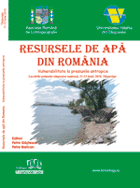11-13 June 2010. Water resources from Romania. Vulnerability to the pressure of man’s activities, Targoviste (Romania)

Resursele de apă din România. Vulnerabilitate la activităţile antropice
[Water resources from Romania. Vulnerability to the pressure of man’s activities]
Conference Proceedings
ISBN: 978-606-8042-65-7
11-13 June 2010, Targoviste - Romania
Editors
Petre Gâştescu
Petre Breţcan
Caracteristicile fizico-chimice şi tipologice ale zonelor umede din Grupa Centrală a Carpaţilor Orientali
Gheorghe ROMANESCU
University „Al.I.Cuza” of Iasi, Faculty of Geography and Geology, Department of Geography, Bd.Carol I 20A, 700505, Iasi, Romania, E-mail. geluromanescu@yahoo.com
Physico-chemical characteristics and typology of the wet zones from the Central Group of the Eastern Carpathians
Abstract: The Central Group of the Eastern Carpathians presents a diversity of mountain massifs wherefrom are appearing many physical-geographical and typological characteristics of the wetlands. The most wetlands are along river arteries, the lake basins and in areas with excess of moisture due to ground or surface water. Most of wetlands and riverain deep waters from the Central Group of Eastern Carpathians have unconsolidated substrate, like gravel and sand, have permanent character, freshwater, alkaline (pH usually above 9) and mineral soil. 126 wetlands were measured and inventoried. Most belong to the category of fresh water, alkaline, and mineral soil. Only four wetlands are exceptions to this rule: Izvorul Sărat (Salt Spring -salinity 33.6 ‰, eurihalin, pH 6.85, circumneutral, organic soil), Tinovul Mohoş (salinity 0.0, sweet, pH 5.21, acid; organic soil), Pârâul Sărat (Salt Creek - salinity 7.1 ‰, mezosalin, pH 8.56, alkaline, organic soil) and Lacul Roşu (Red Lake - salinity 0.0, sweet; pH 8.04, alkaline, organic soil).
© Asociatia Romana de Limnogeografie (2008)

